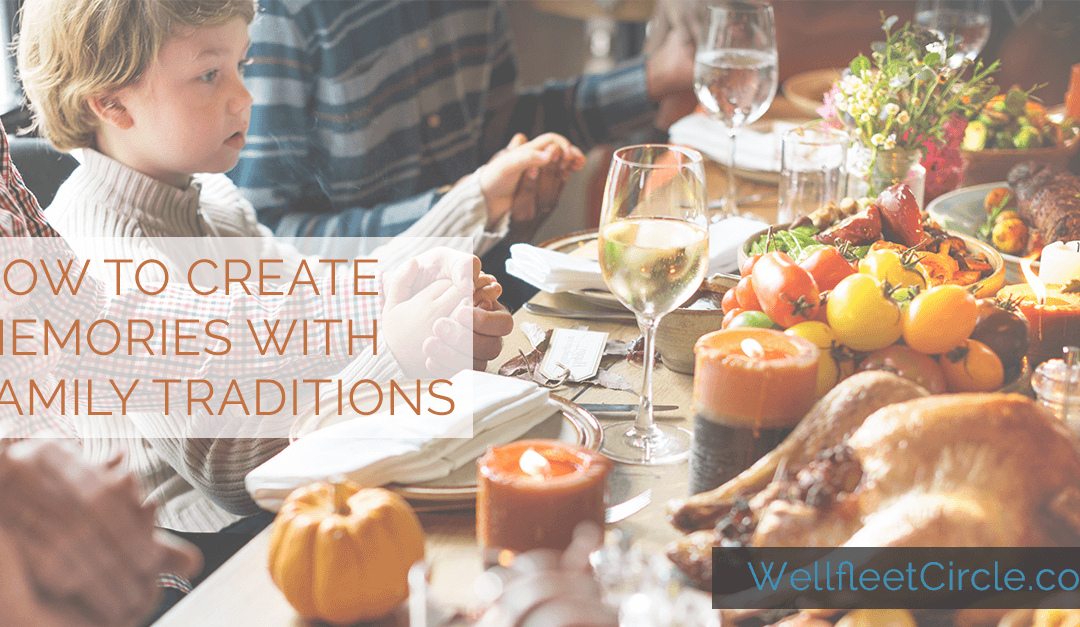Holidays are often built on traditions, which can be both wonderful and complicated.
Traditions can ground us and connect us to our memories and to other generations. But they aren’t static. Maybe you can’t celebrate Thanksgiving at the old homestead, or you struggle to honor your own family traditions along with your spouse’s. And, maybe, during this busy time of year, you may not feel like you have the time or energy to engage in traditions.
It really doesn’t have to be hard or complicated. Can you find a way to honor your past traditions in your own new way? Can you use the process of blending traditions to create some unique for your family? It’s okay to scale back. Sharing traditions is worth striving for.
Let’s take a look at a few simple ways to share holiday traditions and why.
Focus on Food in Family Traditions
Food is evocative. Think about foods you associate with a particular holiday. They may be cultural traditions like turkey on Thanksgiving, latkes for Hanukkah, or black eyed peas and greens on New Year’s Day. Or they could be traditions specific to your family: spiced coffee buns for Christmas morning or a sun-shaped bread for winter solstice.
The food itself becomes part of the memory, but it isn’t the only part. With the food comes a story. Here are three ways to connect to family stories with food:
- Tell why you serve a certain food. That may mean explaining the cultural significance of latkes or why you make stollen.
- Learn about a recipe from a family member. If your grandmother’s meatballs are the highlight of Christmas Eve, ask her to show you how to make them. You’ll learn more spending an afternoon in the kitchen with her than you would from a recipe card.
- Ask family members to fill in the blank. It wouldn’t be (holiday) without ___________. Then ask them to share a story about the food.
But what if you don’t have food memories — or they revolve around leg of lamb and you’re vegetarian? Traditions evolve. If you don’t have a tradition, start one. This is a particularly wonderful way to begin traditions when your children are young. What foods would you like to associate with the holidays? Create your own stories.
Focus on Objects in Family Traditions
Think about the special objects you use for the holidays. Does the roast always go on grandma’s china platter? Has the menorah been passed down in your family for years? Who gave you ornaments for your tree?
In each of these objects is a story. Simply saying, “This tablecloth was my mom’s. I remember it from when I was your age” helps connect the object and tradition to today.
If you know the stories, share them. As you pull out objects in preparation for the holidays, share stories about objects that were handed down, made or given for a special occasion. Part of your tradition can become telling the stories:
“This is the ornament I made for you for your first Christmas. We called you Love Bug, so I made a ladybug with heart shaped wings.”
Or
“I love using Nonny’s silver. I remember sitting at her kitchen table polishing it for what seemed like hours. When I got tired of polishing, she’d tell me stories about winter when she was little.”
If you don’t know the stories, ask about them. Why do we use this old battered candle holder instead of that beautiful one in the cupboard? Where did our manger scene come from? Whose glasses do we use to toast on New Years?
Tell Family Holiday Stories Together
One way to share the family traditions through holiday stories is to talk about what holidays were like when you were a child – and ask older relatives to do the same. This can be done while gathered for the holiday itself or as part of the preparation.
Another way to share stories together is to tell “Remember when” stories. These kinds of stories connect to a particularly memorable holiday. It might be one that didn’t go as planned or that contained a surprise or special event:
- Remember the time when we thought the snowstorm would keep Uncle Sam and Aunt Beth from joining us but they borrowed a four wheel drive and made it through?
- Remember the Christmas Grandpa gave joke gifts from the swap shop? They were hilarious and yet somehow perfectly fit each recipient.
- Remember the Thanksgiving when Karen went into labor just as the turkey came out of the oven?
Remember when we went for a special dinner by sleigh ride for New Year’s and they sat us next to the guitarist with the horrible voice? We shook with silent laughter the whole time.
These kinds of starters often get people talking. “Oh, yes. And remember how . . .” and they start adding their own details and memories.
These stories are part of your holiday tradition. Write them down.
Family stories are your heritage. Each family has a history that no other family has. If you’re interested in the role of storytelling in your own family legacy, download my free resource 5 Questions to Ask at the Table. By telling your stories and sharing them, you keep your history, tradition and ancestors alive, and build connection within your family and across generations.

